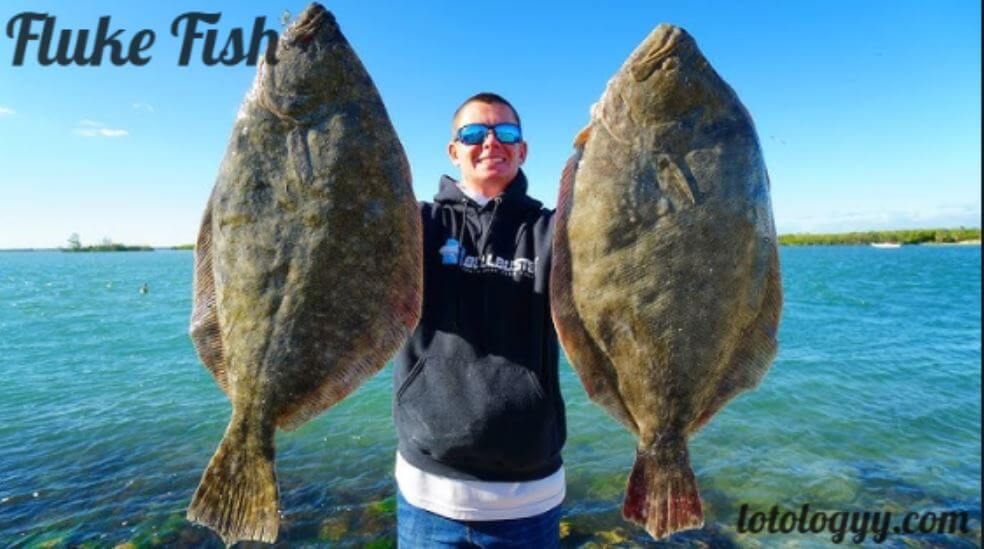1. Introduction
The ocean is full of mysteries, but few creatures are as charming — or as sneaky — because the fluke fish. Also referred to as the summer time flounder, this unique flatfish has perfected the art of camouflage, mixing almost invisibly into the seafloor. Beyond its brilliant disguise, the fluke holds a special region in the hearts of anglers, chefs, and marine fanatics alike. Whether you’re seeking to spot one hiding inside the sand, hoping to reel in a trophy seizure, or savoring a flaky fillet for your plate, the fluke fish has a story worth diving into. Let’s find the secrets and techniques of this tremendous ocean dweller.
2. What is a Fluke Fish?
The fluke, scientifically called Paralichthys dentatus, is greater usually called the summer flounder. Recognized by using its flat, diamond-fashioned frame and bizarre arrangement of each eyes at the same aspect of its head, the fluke is a true surprise of evolution. This design isn’t always just quirky — it’s exceedingly practical. With a body built for mendacity flat towards the ocean ground, the fluke can combination into its environment with ease, making it nearly invisible to each predators and prey.
Their coloration is not fixed, either. A fluke can alter its pores and skin tone to suit the textures and hues of the sand, rocks, or seaweed beneath them, making them one of nature’s maximum remarkable shape-shifters.
3. Habitat and Behavior
Flukes are local to the Western Atlantic Ocean, especially along the east coast of the USA, from North Carolina all the way to Massachusetts. They choose sandy or muddy bottoms in which their camouflage talents shine the brightest. Shallow bays, estuaries, and coastal These fish are ambush predators.
Rather than chasing their prey, flukes lie still, buried inside the sand, anticipating an unsuspecting fish or shrimp to swim with the aid of. Then, with an unexpected burst of electricity, they lunge upward, snatching their meal in a split 2nd. It’s stealth searching at its best.
4. Life Cycle and Diet
Like many fish, flukes begin existence inside the open ocean as tiny larvae. As they develop, something first-rate happens — one eye migrates throughout their head to join the other. This evolutionary variation lets them to stay a sideways lifestyle on the ocean ground.waters are their favorite hangouts, particularly during the warmer months.
Flukes are opportunistic feeders. Their food plan is composed in particular of small fish, shrimp, squid, and crabs. Thanks to their brief reflexes and incredible camouflage, they’re highly effective hunters. As they develop larger, their prey selections grow, too — a few big fluke have been recognized to devour extraordinarily massive food compared to their own length.
5. Fluke Fishing — A Favorite Among Anglers
It’s no wonder that fluke fishing has become a beloved activity for leisure fishermen alongside the Atlantic coast. These fish are not handiest a laugh to trap, thanks to their robust, sudden strikes and elaborate movements, but in addition they make for a super meal afterward.
The exceptional time to gol fluke is commonly past due spring via early fall, with height season inside the heat of summer time — hence the nickname “summer time flounder.” Anglers often use flow fishing techniques, letting the boat slowly move over probable habitats while bouncing bucktail jigs tippedwith bait like squid or minnows.
However, fluke fishing isn’t without its guidelines. Because they’re any such famous goal, many states have policies in vicinity — consisting of minimal size limits and bag limits — to ensure the population remains healthy for generations to come back.
6. Culinary Delight — Cooking Fluke
Ask any seafood lover, and they’ll let you know: fluke is a real treat. The meat is sensitive, flaky, and has a sweet, mild taste that fits an extensive sort of dish. Whether you decide on your fish pan-seared, baked, grilled, or tacos, fluke is versatile sufficient to megastar in any meal.
One famous way to prepare it is absolutely pan-seared with butter, lemon, and a sprinkle of clean herbs. Because the fillets are so soft, they cook in only a few minutes, making fluke an superb preference for brief, elegant dinners.
Another favorite? Fluke ceviche, in which thin slices are marinated in citrus juice, letting the acid “prepare dinner” the fish without warmness — a fresh, light dish ideal for summer season days.
7. Conservation Efforts: Protecting Fluke Populations
Due to the popularity of the flood among commercial and entertaining fishermen, efforts for protection have become increasingly important. Strict fishing rules, including catch limits, seasonal closures and size restrictions, are applied to prevent overfing. Organizations such as NOAA (National Ocean and Atmospheric Administration) continuously monitor the fluke population to remain abundant for future generations. Permanent fishing practices not only help in fluke thrive, but they also protect the delicate balance of the marine ecosystems that they live.
8. How Fluke Influence Their Ecosystem
Fluke aren’t just professional predators — additionally they play an essential function in the meals web. By controlling populations of smaller fish and crustaceans, they assist keep ecological balance in coastal waters. At the identical time, fluke themselves are prey for large fish, sharks, and even marine mammals. Their existence is tightly woven into the health and variety of ocean life, making them a crucial piece of the marine puzzle.
9. Fun Facts About Fluke
- Record Size: While many fluke caught by anglers weigh between 2-5 pounds, the largest can exceed 26 pounds — a true trophy fish!
- Speed Demons: Though they usually lie still, when a fluke decides to strike, it moves
- faster than the human eye can follow.
10. Conclusion
The fluke fish isn’t just another flat fish hiding in the sand — it’s a remarkable example of evolution, survival, and adaptability. From its ability to vanish into the ocean floor to its popularity on dinner tables up and down the Atlantic coast, the fluke has earned its reputation as one of the ocean’s most interesting residents.
So, the next time you’re at the beach, casting a line, or enjoying a seafood feast, remember: somewhere under the waves, a fluke might be lying in wait — unseen but very much alive.










